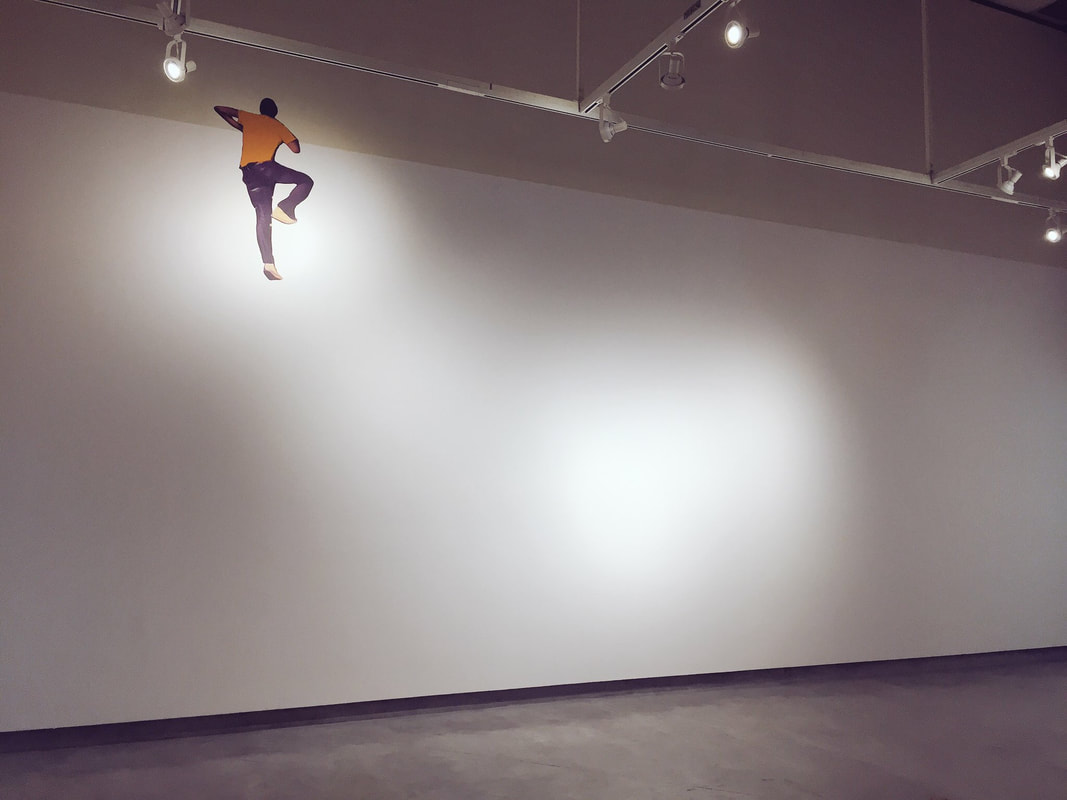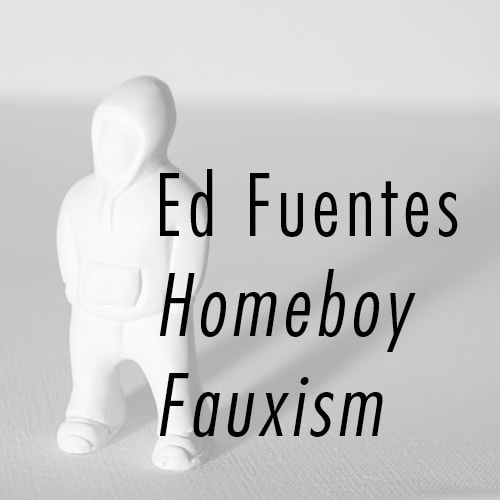|
"Go Ahead. Build That Wall" 2018. Painted sticker on main wall of the Donna Beam Fine Art Gallery at UNLV March, 2018. From "Fauxism," an MFA exhibition. Photo/ Art Ed Fuentes In 2017, KCET selected contributors to post an essay in response to “how the incoming president will shape, change, and redefine the future.” This was first published on January 20, 2017, Inauguration Day. A year later this contribution was on my mind while planning my MFA exhibition at UNLV. The above work was seen at The Donna Beam Fine Art Gallery and will soon to be revisited at the Riverside Art Museum. If things don’t go as planned and jobs don’t come to the Rust Belt, those who voted for Donald Trump may want to look to Latino street artists. They can ask them to share techniques — how to use paint as a protest tool, a practice that came from the barrios, where villagers rose up with brushes for pitchforks and paint as torches. They can get advice from those in underserved communities who have always spoken up by writing on the walls of their neighborhoods, demanding for better education and shared civic liberties. Those artists know how to operate under a long legacy of Chicano muralists and the visual conversations seen in places like East Los Angeles and Boyle Heights, methods that reinterpreted David Alfaro Siqueiros’ “America Tropical” and expanded a movement championed by the Chicago Mural Group and Antonio Bernal who painted the wall of El Teatro Campesino's building in Del Rey, California. At that time murals became a representation of an alternative and real Los Angeles and redefined what art could be for a city. That work is ongoing. Art on the border fence depicting the struggle between the U.S. Border Patrol and migrants, on the Mexican side of the wall separating the United States and Mexico. As many as 2000 migrants a day, most from Mexico, cross the border illegally into the USA by going around, over, and through the fence between the two countries. This feat is made easier by the fact that in some places the fence is no more than a single strand of barb wire. Referred to as "illegal aliens" by some in the USA, economic hardship drives many Mexicans, and Central Americans, to risk their lives for a chance at to thrive in the United States. It’s now all hands on deck to withstand a presidency that branded itself as a movement, rebranded media coverage as a failure, and keeps tossing in social media chatter to add complexity to “truth.” These realities all give street artists more causes to focus on. Of course, this is not to say every piece of art in public space must have intentions of protest infiltrating its composition. The world needs beauty, a break from chaos. But if there is a message to be found in an artwork, there is an obligation to focus on an issue with informed thoughts, be it in murals with long-form storytelling, or the small pieces of street art that mirror assertions in repetition. And it’s the stencil that may be best suited to match the masterful regurgitations of Trump surrogates who target, state, rinse, then repeat. If the fears become real, count on artists to find ways to vent frustration through visual symbols in the streets. It’s a First Amendment right that is shared with the press but has the privilege to send a direct message of grievance. It is strong opposition when used with calm and robust thinking. If voters from the Rust Belt, or anywhere across America [including roughly 800,000 federal workers in 2019] grow dissatisfied from being ignored again and again and want to join in, a spot on the wall can be saved for them. Original Disclaimer: The information, statements and opinions expressed here are solely those of the respective authors and do not reflect the views of KCETLink. KCETLink makes no representations or warranties of any kind, express or implied, about the completeness, accuracy or reliability with respect thereto for any purpose. This first appeared at KCET.org in January 2017.
0 Comments
Your comment will be posted after it is approved.
Leave a Reply. |
An Online Arts Journal
Exhibition:
February 2 – March 31, 2019 Artist Reception and Gallery Talk: Sunday, February 10, 2019, 4 p.m.–7 p.m. S P O N S O R
ARCHIVES
January 2019
TAGS
All
|




